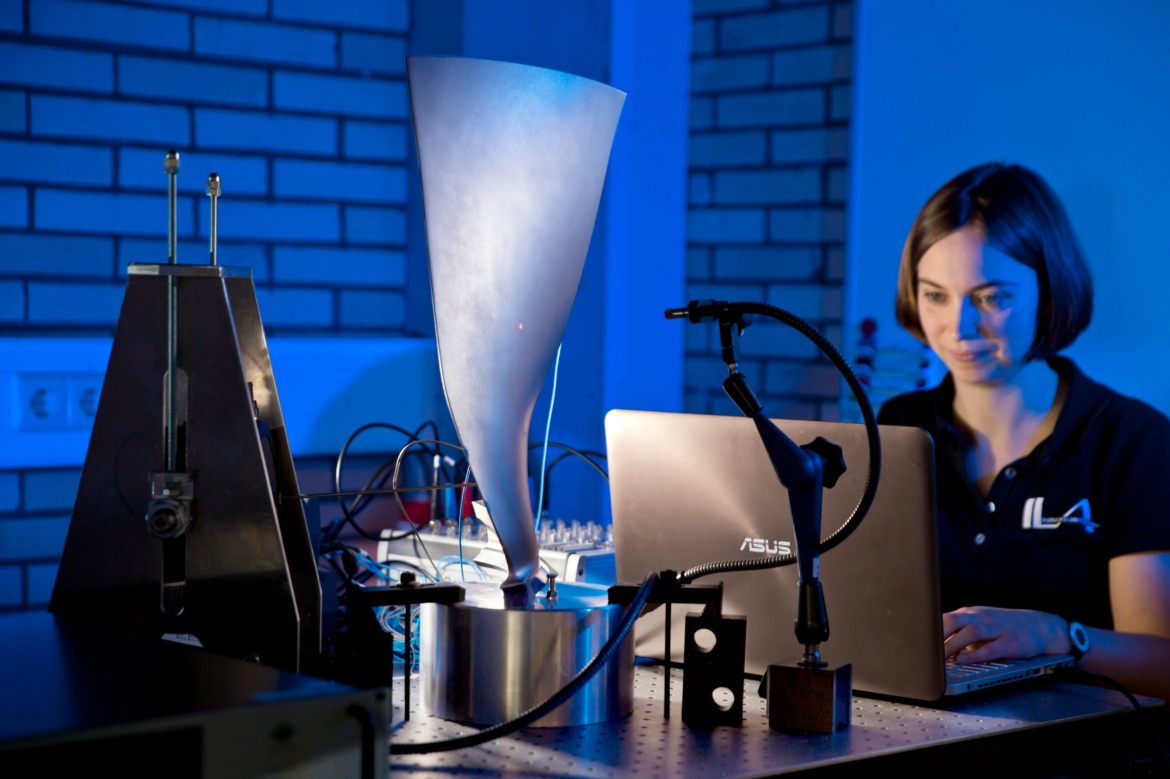Doctoral researcher Maren Scheel from the Institute of Aircraft Propulsion Systems (ILA) at the University of Stuttgart wins the Amelia Earhart Fellowship Award, which is valued at USD 10,000. The prize is awarded by Zonta International. Each year, Zonta honors 35 young female scientists who, like Amelia Earhart, made pioneering achievements in aerospace technology.
What are you researching for your doctoral thesis?
I am investigating the vibration behavior of assembled structures. When a structure vibrates, the vibrations are particularly significant at certain excitation frequencies. This is called resonance. The vibration amplitude at resonance frequency is limited only by damping the overall system. From a technical point of view, it is particularly important to know the resonance frequencies, resonance amplitudes and the damping ratio. A further important aspect is how particular structural elements deform, i.e. the oscillating shape. There are standard procedures to measure these measurements. It is assumed that the measurements can be made regardless of how strongly the component vibrates.
However, the vibration behavior of assembled structures is influenced by contact processes in joints, for example friction. In such cases, the measurements, resonant frequency, damping ratio, and even vibration mode depend on the vibration amplitude. Friction is just one example of the many different physical causes that produce this amplitude dependence.
In my doctoral thesis I am developing a measurement method to determine resonant frequency, damping ratio and vibration mode as a function of vibration amplitude. For this purpose, I have found a suitable control that can excite a structural element to resonance at any vibration amplitude. From the measured vibration response and the excitation force, I can then determine the three parameters I am looking for.
Can you give an example of how your research is being applied and will be applied in the future?
For example, if the resonant frequency, damping ratio, and vibration mode are known, it is possible to model complicated vibration behavior based only on measured data, to identify model parameters, and validate physical models. For example, this can then be used to precisely design mechanical joints such as bolted connections or the connections between a blade and a disk in aircraft engines.
How does your research benefit society?
With accurate and, above all, well-validated models, it is possible to design better components. For example, this means that lighter components can be built. Lightweight construction helps us conserve resources and reduce emissions. However, lighter structures are more susceptible to vibration. But safe operation can nevertheless be maintained because we now know the exact resonant frequency, damping ratio and vibration mode.
You have received an award established in honor of Amelia Earhart. Had you heard of this famous pilot before you applied? Do you see any similarities between you?
I was of course familiar with Amelia Earhart before I applied. As a female pilot, she is a role model for many women who work in technical professions. Like her, I also think it is very important to encourage more girls and women to get involved in engineering. I hope that as a female scientist and lecturer I can contribute to making women more visible in this field. I am also a mentor in the university's StartScience program for female students. Mentors involved in this program support female students in their professional orientation.
What are your professional goals for the future?
I expect to complete my doctoral degree in the next few months. After that, I will remain at my institute as a post-doc and continue my research. I will also be more involved in teaching. In the medium term, I would like to set up my own research group at the university and am aiming to complete the habilitation process.
About the Amelia Earhart Fellowship Award
The Amelia Earhart Fellowship Award was established in 1938 in honor of the pilot Amelia Earhart, who in 1932 became the first woman to cross the Atlantic in a 20-hour solo flight. She used the popularity that she had gained through her flying records to campaign for women’s rights. She helped women to gain admission to technical universities and supported them in choosing technical professions. During her attempt to fly around the earth along the equator, Amelia Earhart went missing in 1937. The Amelia Earhart Fellowship Award is intended to support the research work of young female scientists and to keep them motivated on their further career path. To date, 1,674 women from 75 countries have received the award.
What is Zonta?
Zonta International is a global association of women professionals in positions of responsibility. As an NGO at the United Nations, as well as in the individual local clubs, its goal is to improve the status of women in legal, political, economic, social, and professional terms. There are over 1,200 clubs with more than 30,000 members in 63 countries worldwide.
More Amelia Earhart Award Winners at the University of Stuttgart





